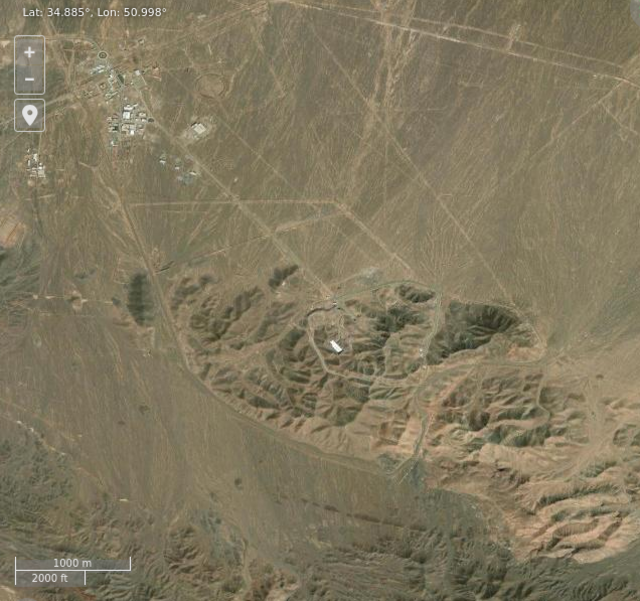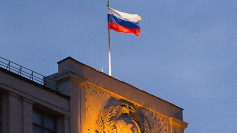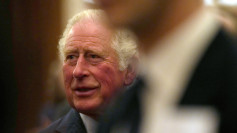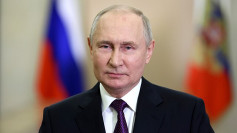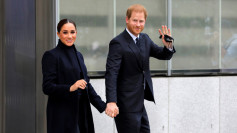The Biden administration faces growing scrutiny over conflicting intelligence assessments on whether Iran secretly moved its highly enriched uranium before U.S. bombers carried out a massive strike on three nuclear facilities Sunday, using more than a dozen 30,000-pound bunker-buster bombs.
Defense Secretary Pete Hegseth said Thursday he had seen no evidence Iran relocated any of its uranium stockpile in advance of the assault. "I'm not aware of any intelligence that I've reviewed that says things were not where they were supposed to be, moved or otherwise," Hegseth told reporters at the Pentagon. Standing beside him, President Donald Trump echoed the view, claiming, "Nothing was taken out of (the) facility."
Yet satellite images from Maxar Technologies captured on June 19 and 20 show at least 16 cargo trucks lined up outside the Fordow Fuel Enrichment Facility, a deeply buried site northwest of Qom, raising doubts among international analysts. According to the Financial Times, European intelligence sources concluded that Iran's 408 kilograms of 60%-enriched uranium-just short of weapons-grade-was likely relocated before the U.S. strike.
A senior Iranian official confirmed to Reuters that "most of the 60% highly enriched uranium had been moved to an undisclosed location before the attack." Similarly, two Israeli officials told The New York Times that about 400 kilograms of enriched uranium were removed from Fordow days prior to the bombing.
While the White House dismissed such claims, Press Secretary Karoline Leavitt stated Thursday: "We were watching closely and there was no indication to the United States that any of that enriched uranium was moved."
At the same press briefing, Gen. Dan Caine, Chairman of the Joint Chiefs of Staff, focused on the military mechanics of the operation, noting that "supercomputer simulations" had been run for over 15 years to prepare for striking Iran's underground complexes. "We were quietly and in a secret way the biggest users of supercomputer hours within the United States," Caine said. He declined to offer his own damage assessment, deferring instead to intelligence officials.
The Pentagon has offered mixed messages. A leaked preliminary Defense Intelligence Agency (DIA) report suggested the bombing set Iran's nuclear capabilities back only "several months." DIA officials reportedly expressed "low confidence" in verifying whether uranium had remained in place. Still, Hegseth pushed back forcefully on that characterization, citing CIA Director John Ratcliffe's statement that the program was "severely damaged" and would take "years to rebuild."
The Israeli Atomic Energy Commission claimed the Fordow site is now "inoperable," with the strikes having "destroyed the site's critical infrastructure." Iran disputes this version. Supreme Leader Ayatollah Ali Khamenei, in his first public statement since the 12-day conflict ended, accused the U.S. of exaggerating the effects. "They could not achieve anything significant," he said on state television.
IAEA Director General Rafael Grossi confirmed that inspectors had last verified Iran's uranium stockpile on June 13. "We do not have information of the whereabouts of this material," Grossi told Fox News. He added on CNN, "Iran has made no secret that they have protected this material." Inspections have not resumed since the U.S. strikes, with Tehran barring IAEA access.
Vice President JD Vance acknowledged the ambiguity, telling ABC News, "We're going to work in the coming weeks to ensure that we do something with that fuel," but stopped short of confirming its location.
The uncertainty over the uranium's whereabouts has spurred a fresh debate in Congress. Senators are preparing to vote on a resolution requiring congressional authorization for future strikes on Iran. Although the measure is unlikely to pass, the classified briefing held Thursday by Hegseth, Ratcliffe, Secretary of State Marco Rubio, and Gen. Caine emphasized how seriously lawmakers are treating the fallout from the operation.
Meanwhile, Trump has gone on the offensive, lashing out at the press. "There are so many aspects of what our brave men and women did that ... because of the hatred of this press corps, are undermined," Hegseth said, accusing reporters of rooting against the administration. Trump praised the event as "One of the greatest, most professional, and most 'confirming' News Conferences I have ever seen!"
Iran continues to assert that its nuclear program remains civilian in nature and that it has no intention of halting uranium enrichment. Ali Shamkhani, senior adviser to Khamenei, told The Telegraph, "Even assuming the complete destruction of the sites, the game is not over, because enriched materials, indigenous knowledge, and political will remain intact."
